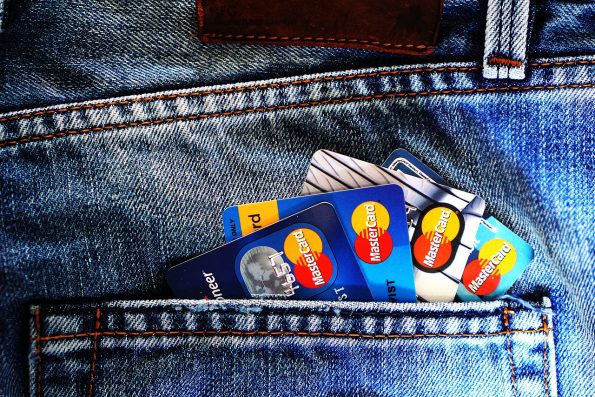How Proper Chargeback Management Can Help Recoup Losses
When properly used, chargebacks protect customers and their financial well-being. Some unscrupulous companies simply fall short of expectations or commit outright fraud, ripping consumers off. With chargebacks, cardholders can claw back stemming from transactions made with their credit or debit card. Unfortunately, however, some customers engage in fraudulent activities, using the chargeback process to score free products, money, and other benefits. Thankfully, there are steps that merchants can also take to recoup losses.

Fighting fraud and chargebacks is crucial for businesses big and small. Even during the best of times, markets are immensely competitive. If companies lose substantial revenues to chargebacks, they may have to pass those losses on to consumers. Yet rising prices could push customers into the arms of your competitors. By recouping losses stemming from chargebacks, you can protect your competitive edge.
Right now, chargebacks appear to be on the rise with a recent survey finding that more than 65 percent of merchants report getting hit with increased chargebacks over the past three years. Fortunately, there are steps retailers can take to minimize the risk of chargebacks, and also to successfully dispute them. With the right approach, you can put your business in a better position to succeed.
Let’s take a look.
Claw Back Revenues By Winning Disputes
Unfortunately, some merchants are unfairly targeted by people looking to abuse the chargeback process. Ultimately, chargebacks are enshrined into law in the United States and elsewhere as well. As a result, card issuers are frequently compelled to provide cardholders the option to file a chargeback. While some customers use the process legitimately, many misuse it. By filing chargebacks, fraudsters may be able to secure free products and other benefits while forcing businesses to foot the bill.
Yet companies do have recourse. If a customer files a chargeback, it may be possible to successfully refute the claim. If so, the card issuer, such as a bank, will return funds to the merchant. We’ll cover how you can win chargeback disputes and recoup losses shortly. Before jumping into how to win chargeback disputes, however, it’s important to note that even after winning, merchants will be on the hook for some costs. Unfortunately, these costs can add up and may become a serious threat to your business.
First, the merchant will have to pay a chargeback fee no matter what. Second, even if you win the chargeback dispute, it’s still a black mark against you, and as a result, your chargeback ratio will rise. If this ratio gets too high payment processors may decline to work with you or might raise processing fees for all transactions.
With all of that said, pushing back against chargebacks is still a wise idea. Doing so will allow organizations to recoup some of their losses. Fighting chargebacks is especially crucial if a lot of money is at stake. While chargeback fees can cost quite a bit, the revenue from the sale may amount to much more.
The Representment Phase Explained
If you’ve decided to fight the chargeback, you will go through the so-called representment phase. In this phase, you will “re-present” the charge and transaction to the card-issuing bank, trying to prove that the sale was legitimate and that you, the seller, did everything you were obligated to do.
Typically, the cardholder will request a chargeback from their bank. In some cases, the bank will initiate a chargeback on their cardholder’s behalf. This usually occurs when the transaction was obviously fraudulent. Once the chargeback process has been started, the cardholder’s bank will send your payment processor explaining why the customer is filing a chargeback. This letter will be forwarded to you and usually have a reason code, which you can then look up.
Once you’ve been notified of the chargeback, you’ll have to either accept or dispute it. If you dispute the chargeback, you will write a rebuttal letter in which you’ll argue that the original transaction was legitimate. You will want to furnish any evidence you can. You’ll typically need to provide the CVV or AVS code, which is found on credit and debit cards and acts sort of like a password. If a merchant failed to collect this code when the customer made their purchase, they will most likely lose their case.
Other things can also be used as evidence, including signed shipping receipts, IP addresses, and more. Collecting data can take a lot of work. Fortunately, some dispute management tools can automatically collect and store evidence and other useful bits of data. This will make the entire chargeback process easier to manage, thus potentially allowing you to reduce losses.
Dispute management platforms can also keep you apprised of important dates. There are important deadlines within the chargeback dispute process, and if you miss them, many banks will automatically rule against you. Simply by keeping a close eye on deadlines and making sure you hit them could help businesses recoup losses.
Using Second Chargebacks to Claw Back Funds
If a chargeback is ultimately approved in the customer’s favor, companies can appeal the decision. This is accomplished through the “second presentment” phase, or second chargeback as it is sometimes known. Essentially the customer, merchant, and respective banks will go through the chargeback process again from the beginning.
Unless the retailer has discovered new and compelling proof, the outcome will likely be the same. If new evidence has been uncovered, the banks may side with the merchant. If so, they will return the funds to the retailer, thus allowing them to recoup losses. Customers can also ask for a second chargeback. If their card-issuing bank ruled against them the first time around, they too are likely to lose the second chargeback unless they can furnish convincing new evidence.
Recouping Losses With Card Network Arbitration
If you’re unsuccessful with the chargeback process, you still have another option: you can ask card networks to step in and make a ruling. While banks have an incentive to side with their cardholders, payment networks are more neutral. As a result, you may have a bit better of a chance of recouping your losses through arbitration provided by a card network.
Unfortunately, however, this process can be expensive, and whoever loses will have to pay for the fees. Fees vary but can cost $500 or more. Before heading to arbitration, you will want to make sure that you’re quite confident about your case. Further, given how high the fees can be, it’s typically only advisable to pursue arbitration if a lot of money is at stake.
If you got hit with a chargeback for a $100 sweater, heading to arbitration would typically be a bad idea. If you got hit with a chargeback for a $4,000 premium television, heading to arbitration might be worth it. That said, unless you’ve uncovered new evidence, your chances of winning the arbitration process likely won’t be good.
Can Businesses Take Customers to Court?
It’s important to note that the chargeback process does not produce legal rulings or settle matters of law. Instead, chargebacks are concerned specifically with payment methods. Even if a customer is approved for a chargeback, a retailer could take that customer to court.
Although such measures are rare, pursuing a civil case might allow a business to recoup losses and cover damages. Keep in mind, however, that legal battles, even in small claims courts, can be time consuming. If you have to hire a lawyer to pursue the case, this will also inflate costs. If the merchandise lost wasn’t particularly expensive you might be better off accepting the chargeback. But if a lot of money is at stake, trying to recover your funds through the court system may be worth the effort.
Merchants Can Recoup Losses Via Proper Chargeback Management
Unfortunately, chargebacks are often used by unscrupulous people to take advantage of businesses or otherwise commit fraudulent activity. At the same time, however, chargeback representments and second chargebacks offer opportunities for merchants to recover funds. The court system is also another option, albeit an extreme one.
The trick to recouping losses via chargebacks is setting up a flexible, efficient dispute management process. Without the right process in place, managing disputes can become a major burden. Often, companies that fail to set up a sound approach will simply ignore them. From their point of view, the dispute process is simply too much of a hassle and the amount of money at stake doesn’t justify the effort.
By using the right tools and a dispute management platform, businesses put themselves in a better position to successfully recoup losses. Dispute management platforms make it easier to identify and gather evidence and to manage the entire representment process. Remember, if you miss deadlines or otherwise fail to cross your T’s and dot your I’s, you’re more likely to lose the dispute.
By setting up a streamlined workflow, you can make chargebacks less of an administrative burden. This will also reduce the amount of labor and other resources needed to manage them, ultimately making it easier to dispute chargebacks and allowing you to recoup more losses.

